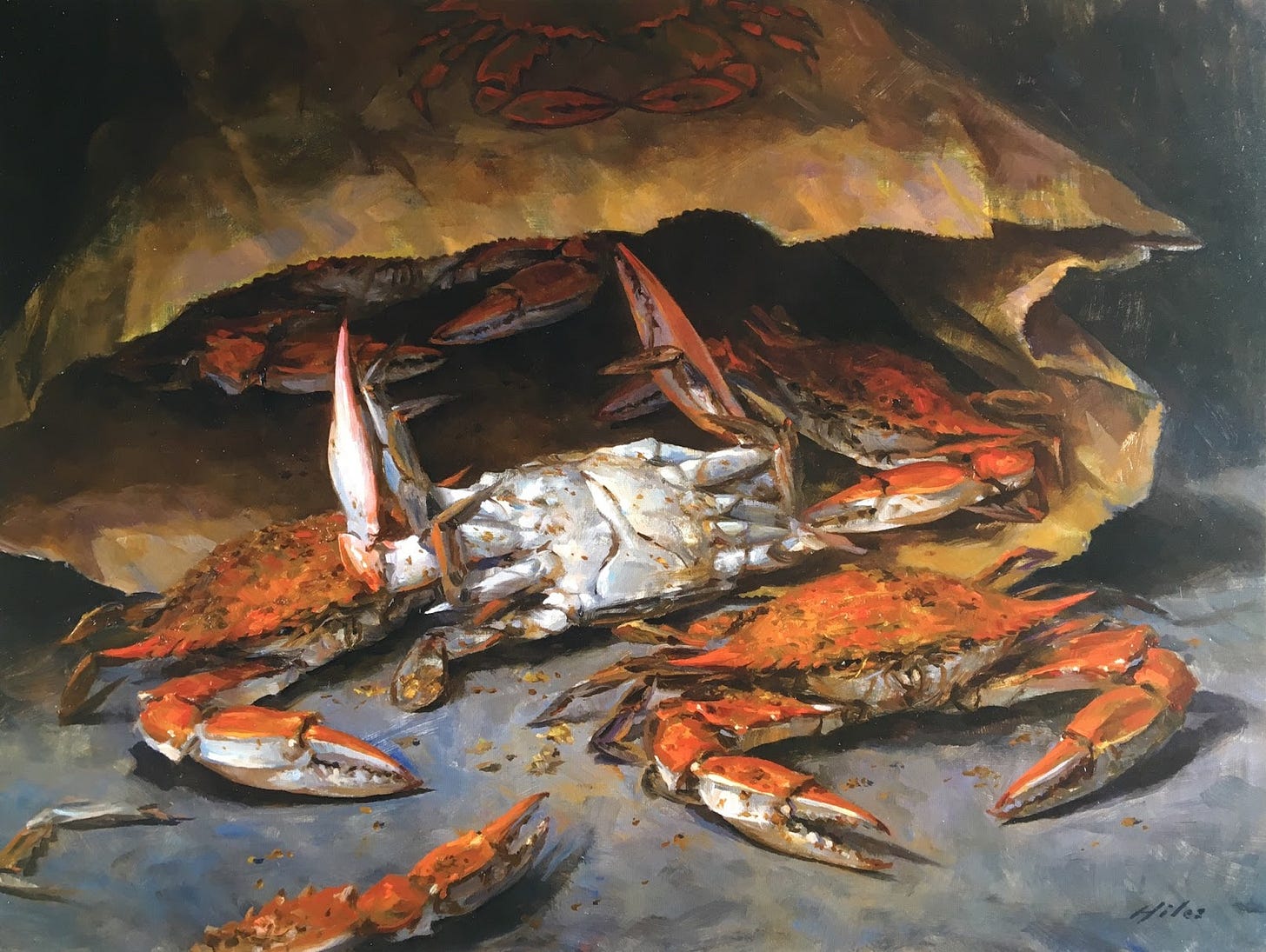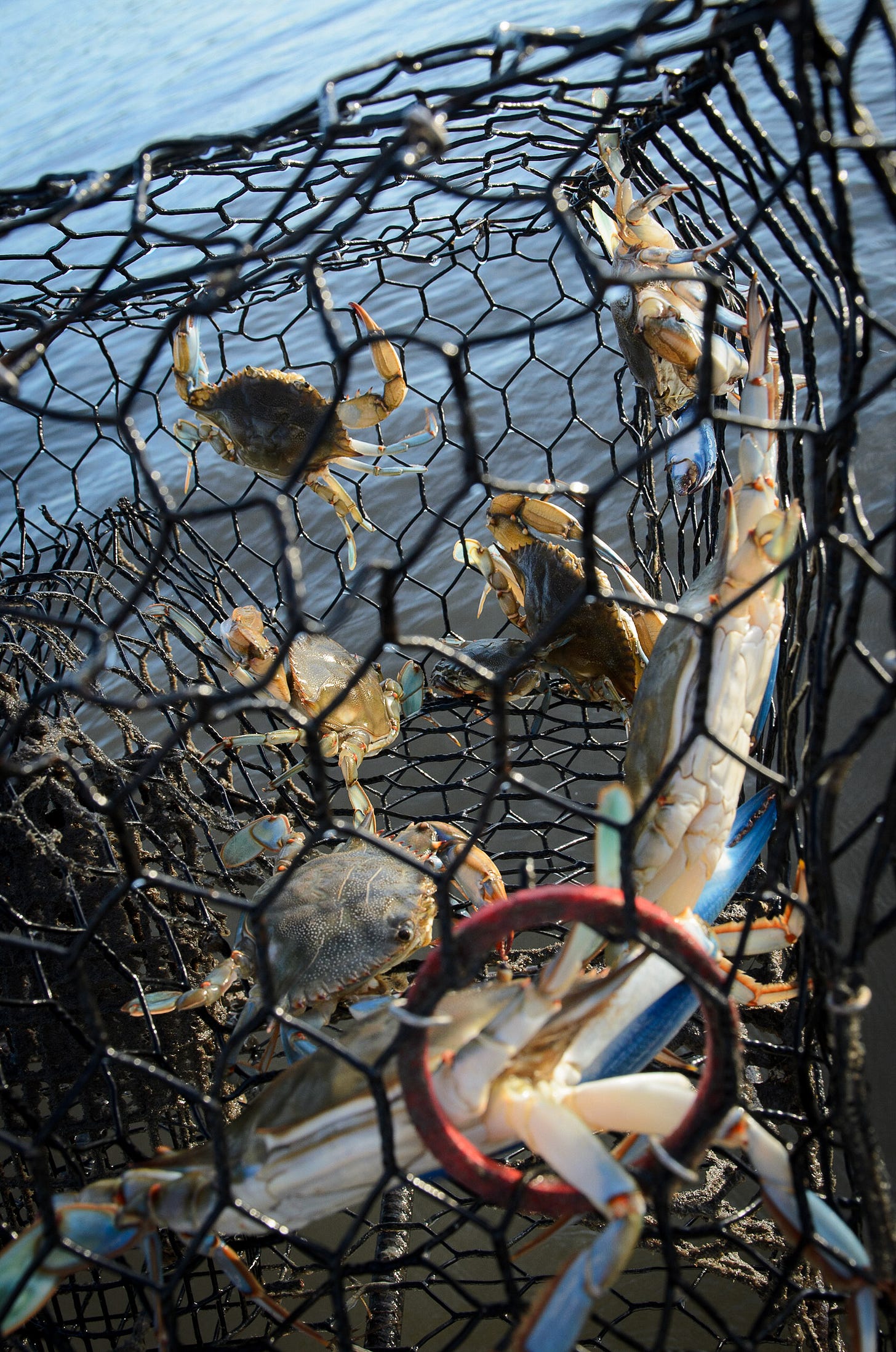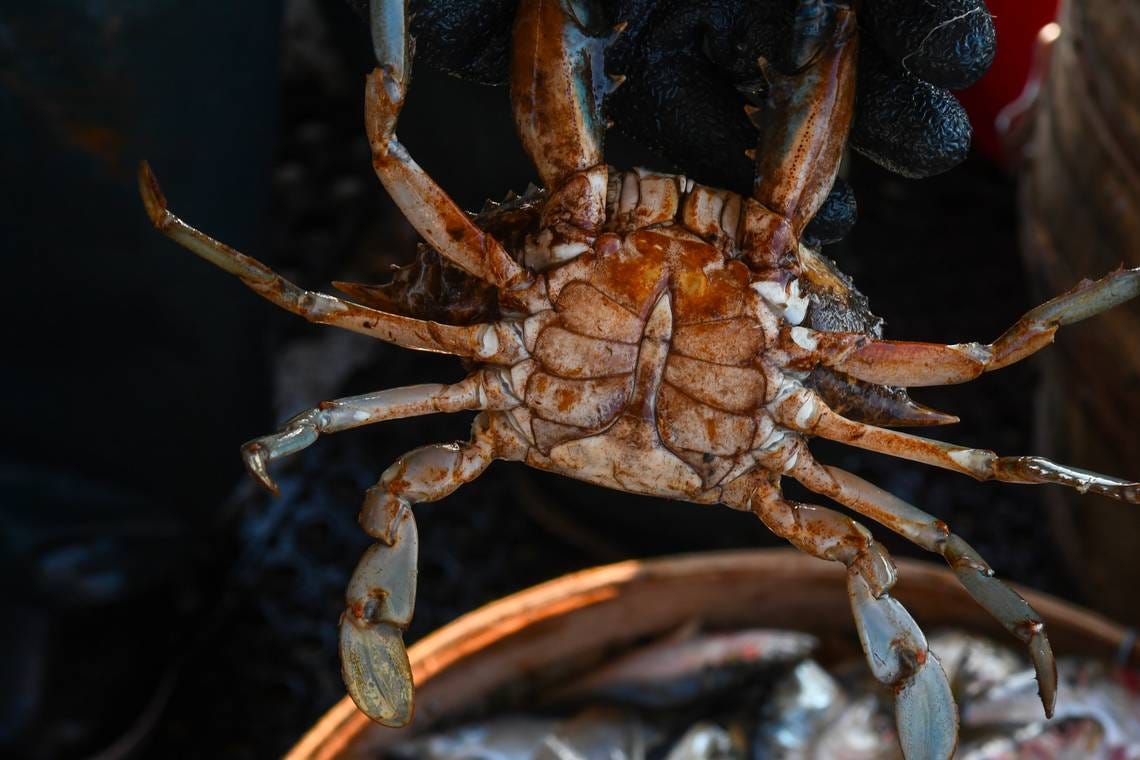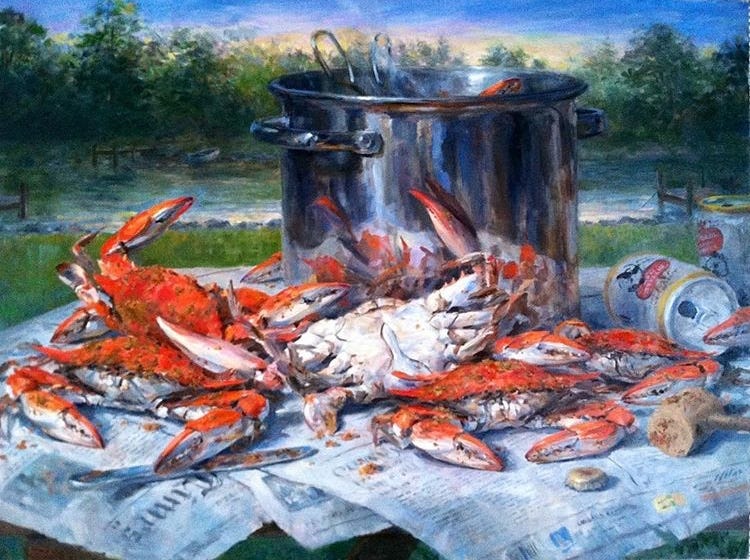The Wild South
A delicacy but mean as hell.
It’s 6 a.m. sharp on a Tuesday morning - Gibbes showed up right on time, ready to launch the 24-foot Carolina skiff from Eddings Point into the murky waters of Jenkins Creek and eventually the Morgan River. To get the work done, we needed to start before the rooster crows.
I like to call him MacGyver, because like the star of the 1980s television series, he not only can fix anything, but he knows every nook, every cranny, every shortcut, every sandbar or hidden danger in the waters surrounding Beaufort County. He’s been fishing with his dad since the day after he was born, spent nearly every weekend at the family fish camp along Trenchards Inlet, and tells me saltwater runs in his veins.
It’s a breezy but muggy morning, about 72 degrees. Gibbes is wearing a T-shirt with a bucket hat that covers the top of his head. I’m hoping my cotton pullover and sun visor will do the job.
Once the skiff was floating, he pushed it away from the trailer, and I helped guide it as he pulled the trailer out. Once back on board, Gibbes jerked the wheel back and forth to make sure the steering mechanism worked. He’s not out on the river for a pleasure cruise. For the next several hours, he will be pulling metal cages from the water, hoping they will be filled with Atlantic blue crabs—a true Lowcountry treasure. “They’re a delicacy,” says Gibbes,” but they’re mean as hell.” He showed me the scars on his hands from years of getting pinched.
Our coastlines are dominated by vast salt marshes and dense stands of smooth cordgrass and oyster reefs drenched twice daily by tides up to 8 feet. It’s the perfect habitat for blue crab, which hide in the grass feeding on oysters, clams, and snails - anything they can get their vicious claws on. Sometimes you’ll hardly notice them because they burrow into the mud with only their eyes visible as they lie in wait for a passing meal. If they’re not careful, they can become a meal themselves for birds and fish or be caught by crabbers like Gibbes.
He speeds the skiff through the water, stopping often to check one of his traps while I hang on, trying to keep my seat on an upside-down bucket. He uses pogies for bait and keeps rebar in the traps to make sure they stay on the bottom even at low tide.
“The tide comes in and affects where the crabs will be, “ he says. “You’ve got to set the traps where you think the crabs are gonna go.”
We zoomed past several fishermen in boats anchored near treetops that had fallen over at the shoreline. “They’re trying to catch sheepshead, fish that have human-looking teeth,” Gibbs says. “I don’t fish where other people are fishing. Some folks around here couldn’t catch a fish in a bathtub. I stay far away from ‘em.” His voice resonates with the wisdom of years spent on the rivers of Beaufort County.
Gibbs now goes full throttle across the glassy surface of the river to the next set of traps. All of a sudden, a gust of wind catches my visor, and it goes sailing out across the water. There’s no turning back at this point.
We stop at one of his crab pots. Using a pole to snag the line of the pot and a winch to drag it, tied to a 40-foot rope, to the surface. He hoists the cage out of the water and shakes it to loosen the crabs, which fall into a plastic tub. He proceeded to check each strategically located pot on the muddy creek bottom, stuffed with smelly bait fish, trapping the 6 legged crabs. I noticed they have rear swimming legs that look like paddles. They can walk sideways or backwards, finding protection in the tall grass lining the creeks. Many are not so fortunate and end up in these traps, but not before they put up a fight. These are critters that bite and don’t easily let go.
When the tub fills up, Gibbes, with his hands covered in thick rubber gloves, begins the job or sorting the crab by size and quality. He throws back small ones or females carrying eggs, keeping crabs that are at least five inches across the shell, point to point. “The best crabs have stained or 'rusty' abdomens,” he explained. “The firmer the crab, the more meat it has inside.”
After the cage is unloaded and before it is returned to the water, Gibbes cleans the buoy with a scrub brush. Cleanliness is important because the cages are filled with food that people will eventually eat. A clean habitat keeps crabs happier and healthier.
On the way back to the dock that afternoon, I was filled with visions of pots boiling, loaded with succulent shrimp, our blue crabs, sausage, tender potatoes, and plenty of fresh corn. The anticipation of the feast is more than a meal; it’s a celebration of our Southern culture. I could hardly wait to get the pots boiling.
Zatarain’s Crawfish, Shrimp, and Crab Boil is my choice for seasoning. It comes in a tea-bag-like pouch, which is easy to retrieve from the pot, cut open, and spread atop the entire table of deliciousness. Our table will smell like salt and tide, and folks will devour the feast without even catching a breath. Everyone is happy ‘cause no one can be mad at anyone while eating a mouthful of shrimp.
This recipe will serve about six.
Lowcountry Boil or Frogmore Stew (no frogs allowed)
6 cut-in-half ears of corn on the cob
6 (4-inch) links of smoked sausage
12 large red new potatoes cut in half
3 pounds unpeeled fresh, local shrimp
1 box Zatarain’s Crawfish, Shrimp, and Crab Boil seasoning
Here’s how it must go: Fill a large pot with enough water to cover all the ingredients and bring it to a boil. Add the box of seasoning. Once the water is boiling, add the red potatoes and the sausage. Cook on medium heat for 20 minutes. Add corn and cook for an additional 8-10 minutes. Give everything a gentle stir to make sure it cooks evenly.
Get another rolling boil going and dump in the shrimp. Cook for one minute and give the pot another stir. This is where things get very critical. With boiled shrimp, a few seconds late can spell disaster. When the first shrimp turn pink and float, turn off the heat and drain the pot.
Dump the entire pot onto a table lined with layers of newspaper. Finally, step back and admire the mountain of your awesome creation.





I like to call this Frogmore Stew, named for the small town on St. Helena Island. In the past we would serve this on just about any occasion and it never disappoints.